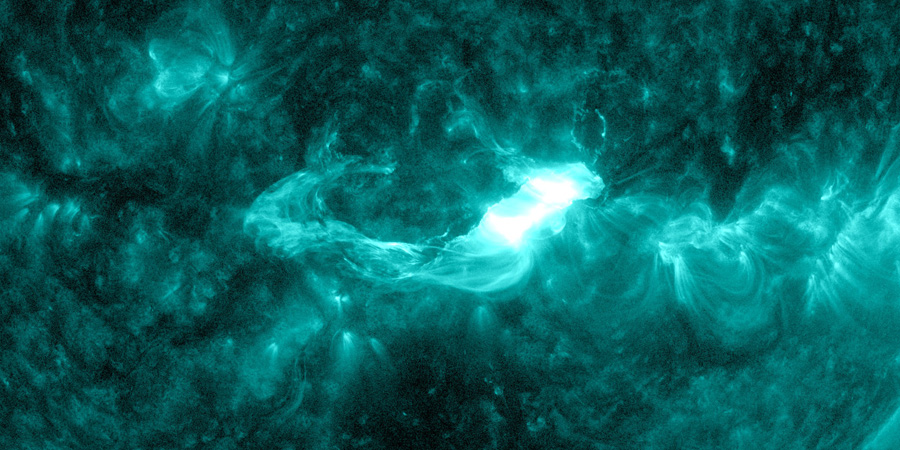M1.7 solar flare, full halo CME
Saturday, 22 April 2023 12:55 UTC

An M1.7 solar flare took place yesterday peaking at 18:12 UTC. The eruption was combined with what looks like a filament eruption around sunspot region 3283 which is located near the center of the earth-facing solar disk.
The solar flare was a long duration event and it quickly became clear that the solar flare was eruptive due to the on-disk signatures as well as reported Type II and IV radio emissions. Fancy words for... yeah this eruption likely launched a plasma cloud in space!
SOHO coronagraph imagery quickly confirmed the launch of a coronal mass ejection and we can see on the animation below that we are dealing with a very nice asymmetrical halo coronal mass ejection. The faintest outline is on the east (left side) of the coronagraph but there is nothing to complain about here. This plasma cloud will hit our planet head on, there is no chance that this cloud will miss us.
Today's M1.7 solar flare from earth-facing sunspot region 3283 released a asymmetrical full halo coronal mass ejection which will impact our planet in about three days from now. More detailed information will be provided tomorrow. Animation: SOHO/LASCO. pic.twitter.com/ZIP3B0ezno
— SpaceWeatherLive (@_SpaceWeather_) April 21, 2023
The European SIDC reports that this coronal mass ejection has a speed of about 1100km/s which would put the arrival time at Earth on the first half of Monday, 24 April. Taking all of the facts in account it is likely that we could see moderate (G2) to strong (G3) geomagnetic storm conditions from this event when the plasma cloud arrives providing the north-south direction of the IMF (Bz) turns southward for a prolonged period of time.
Should we reach strong G3 geomagnetic storm conditions than that could be a great chance to catch aurora at middle latitudes like England, the Netherlands and northern Germany. In the United States aurora might become visible as far south as Utah and Colorado and down under you might be able to catch a glimpse from locations like Melbourne in Australia and Wellington in New Zealand.
Thank you for reading this article! Did you have any trouble with the technical terms used in this article? Our help section is the place to be where you can find in-depth articles, a FAQ and a list with common abbreviations. Still puzzled? Just post on our forum where we will help you the best we can!
Latest news
Latest forum messages
Support SpaceWeatherLive.com!
A lot of people come to SpaceWeatherLive to follow the Sun's activity or if there is aurora to be seen, but with more traffic comes higher server costs. Consider a donation if you enjoy SpaceWeatherLive so we can keep the website online!

Space weather facts
| Last X-flare | 2024/03/28 | X1.1 |
| Last M-flare | 2024/04/15 | M3.9 |
| Last geomagnetic storm | 2024/03/25 | Kp5 (G1) |
| Spotless days | |
|---|---|
| Last spotless day | 2022/06/08 |
| Monthly mean Sunspot Number | |
|---|---|
| March 2024 | 104.9 -19.8 |


